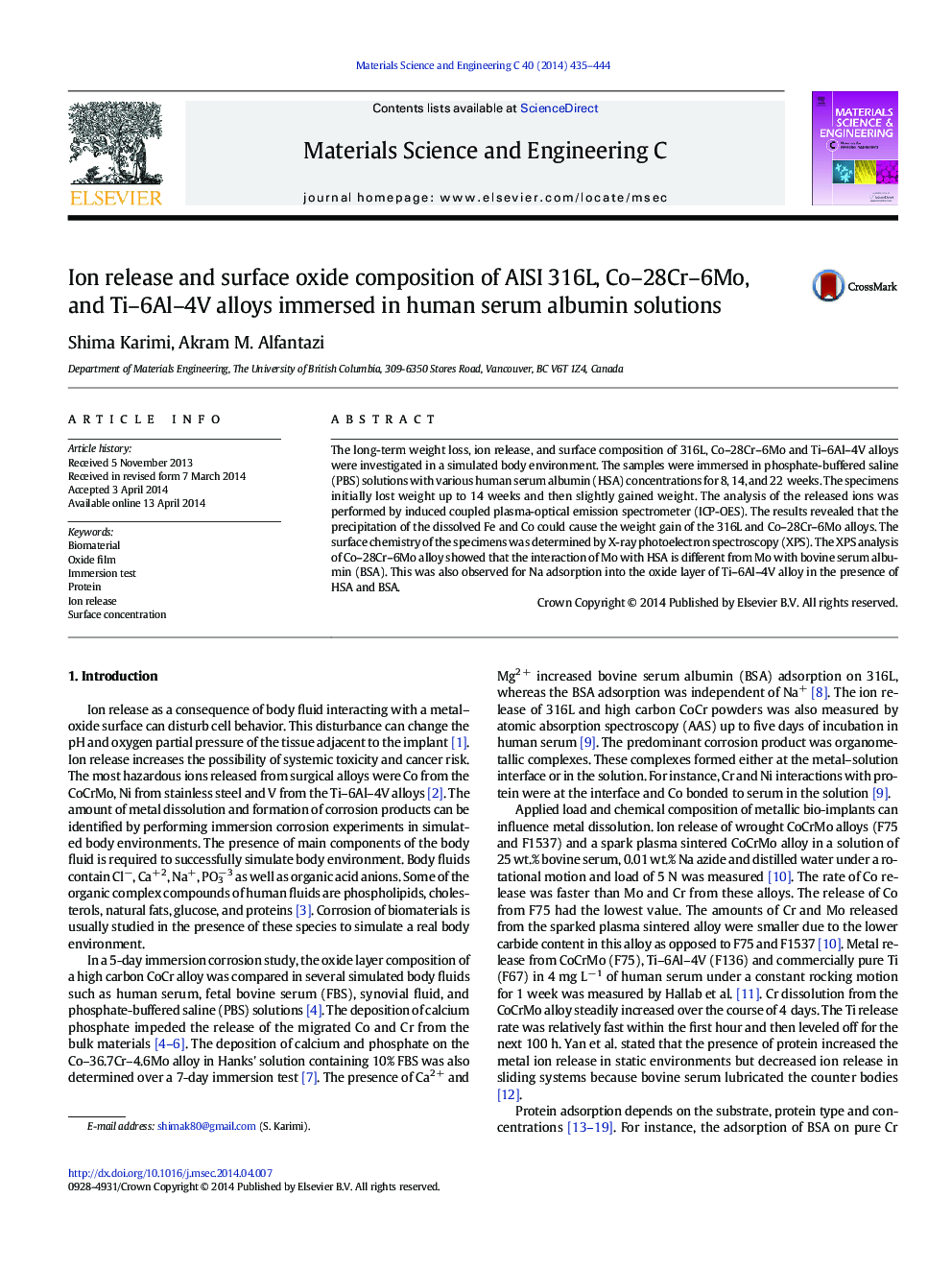| Article ID | Journal | Published Year | Pages | File Type |
|---|---|---|---|---|
| 1428361 | Materials Science and Engineering: C | 2014 | 10 Pages |
•Long-term study of weight loss, ion release, and surface composition in HSA solution•Comparison between HSA and BSA as protein simulators in PBS solutions•The most ions released from 316L and Co–28Cr–6Mo were Fe and Co.•The oxide composition of 316L contained Fe2O3, MoO2, and MoO3 in only HSA solutions.
The long-term weight loss, ion release, and surface composition of 316L, Co–28Cr–6Mo and Ti–6Al–4V alloys were investigated in a simulated body environment. The samples were immersed in phosphate-buffered saline (PBS) solutions with various human serum albumin (HSA) concentrations for 8, 14, and 22 weeks. The specimens initially lost weight up to 14 weeks and then slightly gained weight. The analysis of the released ions was performed by induced coupled plasma-optical emission spectrometer (ICP-OES). The results revealed that the precipitation of the dissolved Fe and Co could cause the weight gain of the 316L and Co–28Cr–6Mo alloys. The surface chemistry of the specimens was determined by X-ray photoelectron spectroscopy (XPS). The XPS analysis of Co–28Cr–6Mo alloy showed that the interaction of Mo with HSA is different from Mo with bovine serum albumin (BSA). This was also observed for Na adsorption into the oxide layer of Ti–6Al–4V alloy in the presence of HSA and BSA.
